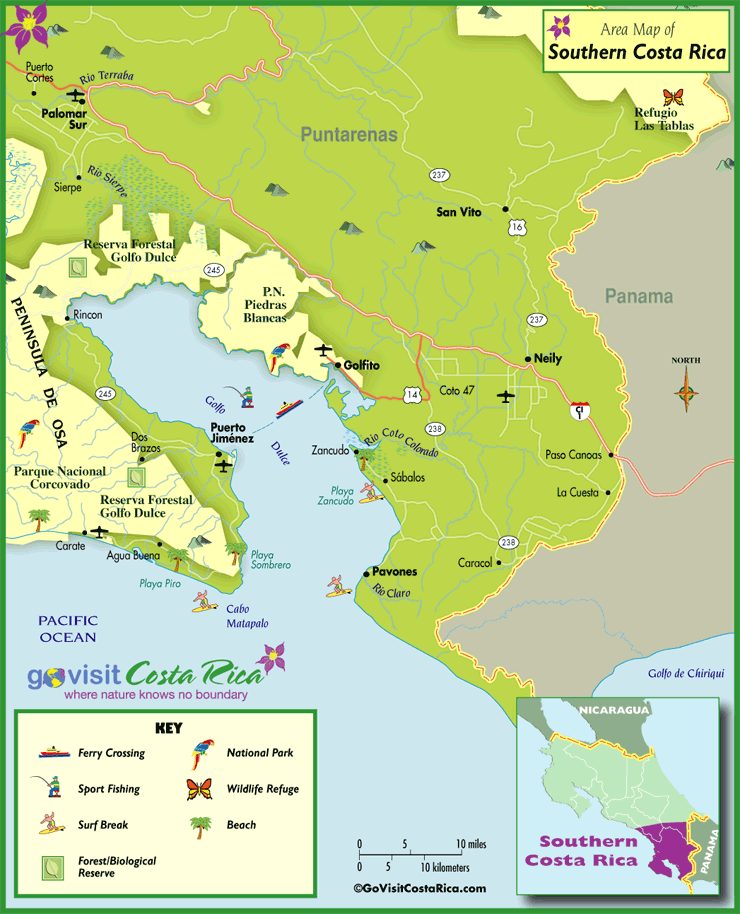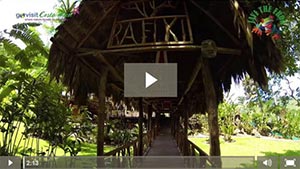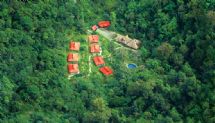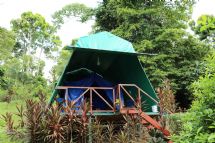Las Tablas Protected Zone, South Puntarenas

Quetzal spotted in las Tablas Protected Zone
One of the world’s most diverse places biologically, the Las Tablas Protected Zone in La Amistad National Park is on the UNESCO World Heritage List. The park’s biosphere on the border of Panama became the Las Tablas Protected Zone in 1981. Located at San Vito de Coto Brus in South Puntarenas, the zone is approximately 50,000 acres in size. The Las Tablas Protected Zone is a top destination for eco-tourists, bird watchers, and adventure seekers.
A Rich Habitat
The protected zone of Las Tablas creates a rich habitat for animals and birds such as the colorful quetzal. The high altitude of the zone helps trees like oaks and Lauraceae thrive. The bright green and red quetzal lives in the zone in high numbers due to the abundant amount of Lauraceae, their chief food source, that is available.
The Largest Park
The park that the Las Tablas Protected Zone resides in, La Amistad, is the largest national park in Costa Rica. La Amistad National Park is home to approximately two-thirds of the species that live in the country. This park also has more old-growth forest than all other Costa Rican parks and is the largest park in the country with over 470,000 acres of unspoiled land. A spectrum of ecosystems exist in the park including tropical lowland rainforest, highland cloud forest, and alpine rainy páramo tundra.
Celebrating International Peace
Managed by the governments of both Costa Rica and Panama, La Amistad National Park is also a place where international peace is celebrated. It hosts a university-level research facility on site. The Las Alturas Research Facility is run by Stanford as well as other universities around the world as the base for graduate and postgraduate research of the park’s many indigenous tropical ecosystems and their inhabitants.
Abounding With Plants and Animals
New species of insects and plants are continually being discovered in La Amistad National Park. Reptile and amphibian species number over 250 kinds and there are approximately 400 bird species that live in the park. About 100 species of fish make their home in the park’s waterways. Mammal sightings by hikers include giant anteaters, Baird’s tapirs, and the six neotropical cat species; the jaguar, margay, jaguarondi, puma, oncilla, and ocelot. The park also boasts the largest population of jaguars in Costa Rica.
Planning Your Visit
This destination is a dream trip for many tropical exploration enthusiasts. The variety of ecosystems from lowland rainforest to highland cloud forests is breathtaking. Since there are many parts of the park that have never been explored, it is best to travel in the park with an experienced guide to show the way. While the scenery is beautiful, trails are either nonexistent or unmarked.
Map of the Area

Get Ready for Adventure
It is a rugged adventure just to get to the park, with 4WD vehicles a must have just to get to one of the four Puestos that are the entrance stations on the Pacific side of the park. Travel into the park from one of the puestos is either by foot or horseback. The puesto that is the park headquarters is Estación Altimira. It is located 12 miles north of Guácimo and has restrooms, showers, and camping available. No lodging or camping sites are located in the interior of La Amistad Park.
The diversity of habitats in the park is unmatched anywhere else in Costa Rica and is the one chance to experience the most northern páramo ecosystem in the entire world. The rareness and pristine nature of the park and the protected zone are two of the reasons UNESCO recommends travelers that are able to visit La Amistad National Park and the Las Tablas Protected Zone do so.
12 Days / 11 Nights or 10 Days / 9 Nights
Starting at $2,352 per person
11 Days / 10 Nights
Starting at $3,874 per person















.jpg)

